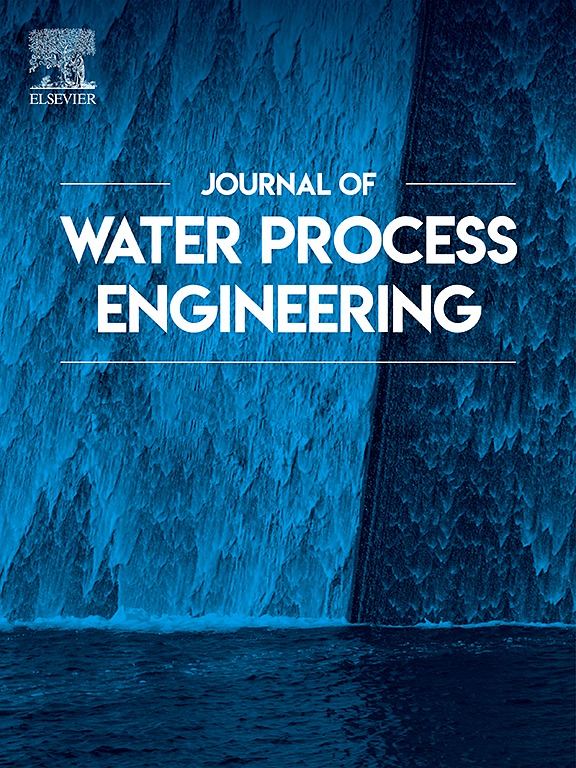Significant improvement in the phenol degradation performance of Ti/PbO2 electrode through La and PVP co-doping strategy
IF 6.3
2区 工程技术
Q1 ENGINEERING, CHEMICAL
引用次数: 0
Abstract
In this study, a Ti/PbO2-La-PVP electrode was prepared by electrodeposition technique for the efficient degradation of phenol by electrochemical oxidation. The rare earth element La has good ductility and during electrolysis forms cavities, vacancies and other defects on the surface of the anode to change and improve the performance of the electrode; Polyvinylpyrrolidone (PVP), as a nonionic surfactant, can prevent the agglomeration of PbO2 particles, thus increasing the active sites to improve the electrocatalytic efficiency of the electrode. The prepared Ti/PbO2-La-PVP electrode has a dense and uniform tetrahedral surface with the highest oxygen evolution potential (2.67 V), the largest voltammetric charge capacity (72.31 mC·cm−2), the smallest charge transfer resistance (13 Ω·cm−2), the longest accelerated lifetime (78 h), and 7.5 times higher •OH production than the unmodified electrode. The optimum process conditions for phenol degradation were investigated, including initial phenol concentration of 1200 mg·L−1, electrolyte concentration of 4.0 g·L−1, current density of 25 mA·cm−2, electrode spacing of 2.0 cm, Under these conditions, phenol removal rate reached 97.82 % and TOC mineralization rate reached 94.80 % within 180 min. Further, A degradation mechanism is proposed based on intermediate species (catechol, succinic acid, and acrylic acid) identified by HPLC-MS.

求助全文
约1分钟内获得全文
求助全文
来源期刊

Journal of water process engineering
Biochemistry, Genetics and Molecular Biology-Biotechnology
CiteScore
10.70
自引率
8.60%
发文量
846
审稿时长
24 days
期刊介绍:
The Journal of Water Process Engineering aims to publish refereed, high-quality research papers with significant novelty and impact in all areas of the engineering of water and wastewater processing . Papers on advanced and novel treatment processes and technologies are particularly welcome. The Journal considers papers in areas such as nanotechnology and biotechnology applications in water, novel oxidation and separation processes, membrane processes (except those for desalination) , catalytic processes for the removal of water contaminants, sustainable processes, water reuse and recycling, water use and wastewater minimization, integrated/hybrid technology, process modeling of water treatment and novel treatment processes. Submissions on the subject of adsorbents, including standard measurements of adsorption kinetics and equilibrium will only be considered if there is a genuine case for novelty and contribution, for example highly novel, sustainable adsorbents and their use: papers on activated carbon-type materials derived from natural matter, or surfactant-modified clays and related minerals, would not fulfil this criterion. The Journal particularly welcomes contributions involving environmentally, economically and socially sustainable technology for water treatment, including those which are energy-efficient, with minimal or no chemical consumption, and capable of water recycling and reuse that minimizes the direct disposal of wastewater to the aquatic environment. Papers that describe novel ideas for solving issues related to water quality and availability are also welcome, as are those that show the transfer of techniques from other disciplines. The Journal will consider papers dealing with processes for various water matrices including drinking water (except desalination), domestic, urban and industrial wastewaters, in addition to their residues. It is expected that the journal will be of particular relevance to chemical and process engineers working in the field. The Journal welcomes Full Text papers, Short Communications, State-of-the-Art Reviews and Letters to Editors and Case Studies
 求助内容:
求助内容: 应助结果提醒方式:
应助结果提醒方式:


